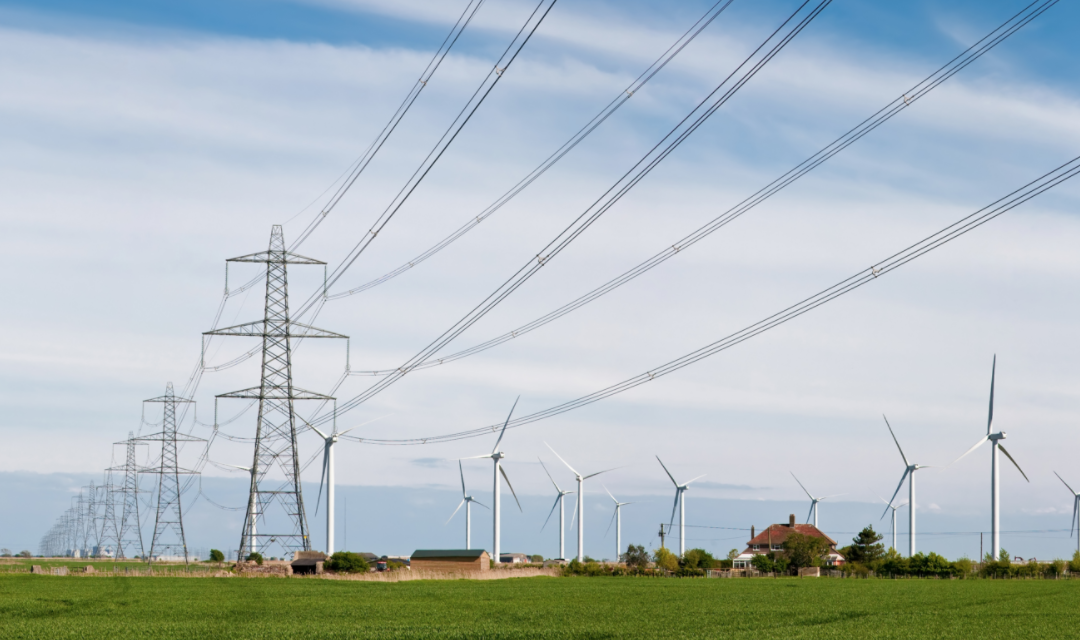Katie Wimsatt, Climate and Clean Energy Intern, authored this blog post for DGA project Americans for a Clean Energy Grid during her summer 2019 internship in coordination with Isabel Harrison.
Climate policy is back on the agenda. As polls have demonstrated public support for urgent climate action, members of the House, Senate, and presidential candidates have considered a host of different climate policies, some of which include investments to improve our electrical grid. Expanding, integrating, and modernizing the North American transmission grid is a bipartisan policy that elected officials and candidates should recognize as integral to combatting climate change.

Image from the National Renewable Energy Laboratory Seams Study that points the way toward the ultimate integration of the U.S. power grid, which will provide consumers with access to lower-cost, more reliable, and cleaner electricity.
All climate plans include provisions to bolster renewable energy development and adaption. Potential for renewable energy exists nationwide, but the strongest and lowest cost renewable resources are concentrated in the 15 states located between the Rocky Mountains and the Mississippi River. This region accounts for 88% of the country’s wind potential and 56% of the country’s utility-scale solar photovoltaic potential but is projected to represent only 30% of the nation’s electricity demand in 2050. Transmission expansion and other improvements to our electricity infrastructure are necessary for the entire nation to reap the benefits of low-cost renewable energy.
Some leading climate plans have recognized the important role of transmission. Representative Ocasio-Cortez’s Green New Deal, for example, would sets ambitious targets for decarbonization, including 100% renewable energy in the U.S. within 10 years, development of green infrastructure, including building and upgrading “smart” power grids, and targeted investment in communities most at risk from climate change, by 2030. The proposal has encouraged other lawmakers to release their own climate plans.
From the other end of the political spectrum, Representative Gaetz’s Green Real Deal aims to lower emissions through unleashing American “innovations and expertise” to bring about new forms of nuclear energy and “cut the maze of red tape” surrounding hydropower and renewable energy generation on federal lands. Gaetz specifically calls out transmission infrastructure:
“Let’s start by modernizing our electric grid. The American Society of Civil Engineers graded our grid D+. Today’s grid cannot accommodate fluctuation in capacity, utilization, and availability of our existing renewable portfolio — much less an expanded use of renewables. The National Renewable Energy Laboratory argues that today’s renewable energy technology, coupled with upgraded grid technology, could result in renewable energy meeting 80 percent of America’s energy needs by 2050.”
Although these two policies rely on fundamentally different approaches to lower carbon emissions, they agree on one important point: modernization of the electrical grid is necessary to meet growing demand for renewable energy, demonstrating the bipartisan imperative of modernizing our electricity infrastructure.
We additionally reviewed the proposed climate and energy policies of all the 2020 presidential candidates. There is consensus among all the Democratic candidates that action must be taken on climate change and the majority of the candidates have voiced their support for the Green New Deal. The 2020 Democratic Presidential candidates also recognize the key role of decarbonizing the electric sector in their climate plans. However, only a few candidates highlight, or even mention, the role transmission will play in meeting the ambitious target set by the Green New Deal on their websites.
Washington Governor Jay Inslee’s ambitious plan has been cheered by a leading climate activism group as a “spirited commitment to bold climate action that young people are looking for in our next president” and includes the most detail on transmission. The Governor’s 100% Clean Energy for America Plan recognizes the necessity for expanding transmission and would use “federal lands, offshore waters and facilities to deploy more renewable energy and transmission,” expand “long-distance interstate and interregional transmission of clean electricity through expedited planning, broad cost allocation, and negotiated siting,” enhance “utilization of existing transmission and distribution assets through Dynamic Line Ratings, demand-response, new sensors and controls, battery storage, and resilient distributed energy resources,” and provide “federal financing for anticipatory construction of transmission capacity to areas with significant queues of clean-energy generation capacity awaiting transmission.”
At the time of writing this blog post, Vice President Biden, Senators Harris and Gillibrand, Governor Hickenlooper, Representative Delaney, Tom Steyer, and Andrew Yang have pledged to invest in the nation’s energy infrastructure if elected, but have provided fewer details on how that investment will be utilized. Currently, no Republican presidential candidate has released a climate or energy plan that recognizes the importance of modernizing our electrical grid.
Experts agree transmission upgrades are necessary for the large-scale climate action the public desires. Significant upgrades to our energy infrastructure are necessary to enable access to the “cost-effective, higher-quality renewable resources” that are necessary to decarbonize the U.S. economy. Beyond increased access to clean energy, the creation of a national electrical grid is projected to produce benefits that outweigh the costs.
As Presidential candidates and Members of Congress continue to release specific plans to combat climate change, Americans for a Clean Energy Grid will be highlighting the all language that reflects the growing consensus that modernizing and expanding the electrical grid is a key part of tackling climate change.
For a complete analysis of presidential climate plans that include information on transmission infrastructure, visit the ACEG website.
